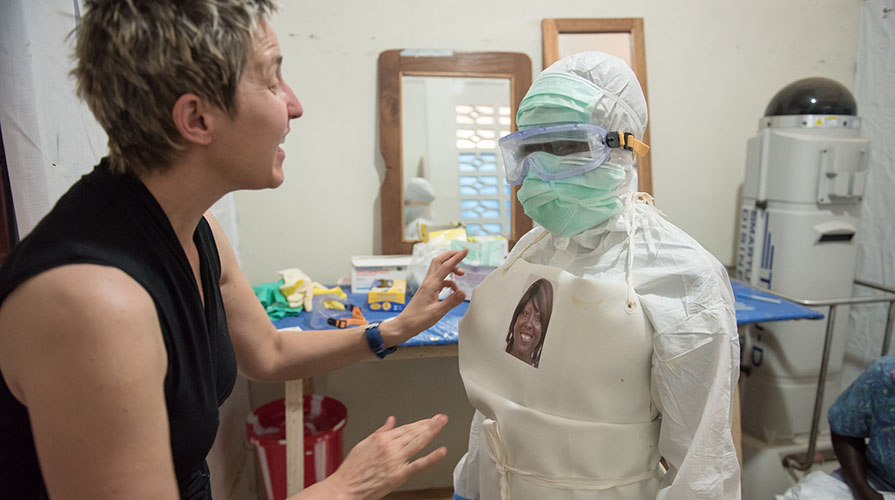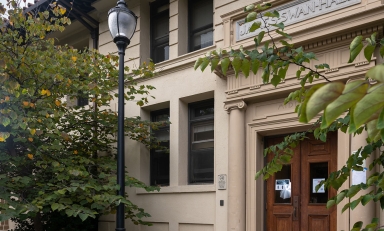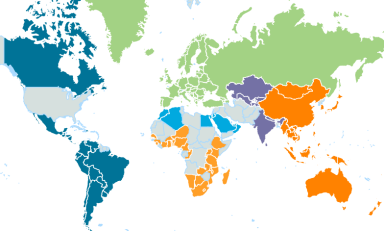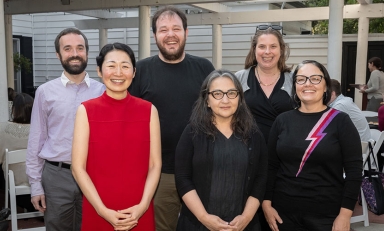
Five years ago, Mary Beth Heffernan of Occidental’s art department flew to Liberia with a simple idea: Would portraits worn on the outside of their frightening personal protection equipment (PPE) suits humanize healthcare workers and make patients more receptive to their care?
Today, in the midst of the COVID-19 pandemic a growing number of doctors, nurses and other healthcare professionals across the country are embracing the idea of wearing PPE portraits and reaching out to Heffernan to take advantage of her field-tested insights.
“I’ve been getting calls from all over,” says Heffernan, a professor of art and art history who has served on the Occidental faculty since 2002. “While it’s awful that the catalyst has been the current pandemic, I’m glad that more patients will be able to see the face of the person who’s caring for them. I’ve been working for years to bring it into more general use for patients who only see masked caregivers. I’m so glad it can serve clinicians and patients at a time of tremendous need.”
Among the first to call Heffernan was Cati Brown-Johnson, Ph.D., a research scientist for the Evaluation Sciences Unit at Stanford University School of Medicine who had seen her Ebola PPE project in the 2015 documentary, The Adaptable Mind.
“Stanford had a handful of COVID-19 patients at that point and I thought we should do this, so I sent a note to Mary Beth asking if she would be interested in collaborating. She jumped on it right away,” Brown-Johnson says. A week-long pilot program at one of Stanford’s drive-through testing clinics demonstrated the value of placing portraits on PPEs. “Everyone really liked it—the medical assistants and techs were asking if they could get them, too.”
Now PPE portraits are being rolled out in all of Stanford’s drive-through clinics and plans are being made to extend the practice to all primary care services, Brown-Johnson says. “People are really excited about it. It feels like an obvious, simple way to humanize providers and to make a difference.”
The reaction was the same at the University of Massachusetts Medical School, where the palliative care staff are now using PPE portraits. Heffernan is also assisting officials at the USC Keck School of Medicine and Boston Children’s Hospital regarding use of the program.
The seeming simplicity of Heffernan’s approach is the product of months of work, close consultation with the World Health Organization’s Liberia Case Management team, and weeks of testing in Ebola treatment centers in Liberia. Rather than laminated cards that can pose cross-contamination issues, Heffernan advocates the use of tightly framed portraits printed on soft, disposable stickers with an easy-to-see matte finish. “Her insights have been incredibly valuable,” Brown-Johnson says.
As an artist whose work explores the intersection of photography and the human body, it seemed obvious to Heffernan five years ago that attaching a disposable headshot portrait on medical workers’ protective gear could go a long way in mitigating the frightening effects of treating a highly infectious disease.
"The otherworldly appearance and physical barrier of the PPEs—in Liberia, medical workers found themselves perceived as ‘scary ninjas’—are isolating, dehumanizing and compound patient fear," she says. "Photo portrait labels help engender trust and facilitate the emotional bond between doctors, nurses and their patients."
While the value of PPE portraits seems intuitive, Brown-Johnson and Heffernan hope that their collaboration will yield some hard data on their impact on patients. “There’s a substantial body of literature around patient mindset and the placebo effect,” Brown-Johnson says. “Some of that has to do with the warmth and competence of providers. While a PPE immediately signals competence, I’m interested in the concept of whether the photos can communicate warmth.” She is currently analyzing patient survey data with an eye toward publication.



